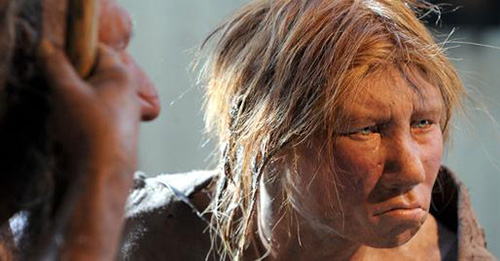The previous timeline of “modern humans arriving in Europe” was about 40,000 years ago (they left the African area about 60,000 years ago). Now, based on work from the journal Nature, that timeline seems different. Here’s some context from The Wall Street Journal:
The Nature study offers a significant revision of that timeline. It concludes that modern humans arrived considerably earlier—about 45,000 years ago—and that the two groups overlapped for anywhere from 2,600 years to 5,400 years before the Neanderthals died out.
Did the overlap mean that two groups in Europe met? Did they breed? Did they exchange or copy tools or other behaviors, a process known as “acculturation”? There is no hard evidence to answer those questions, but there are signs that some contact may have occurred.
Here’s the study from Nature; the central issue has always been around the disappearance of Neanderthals from the fossil record. Scientists and researchers didn’t know how or why that happened; no one was sure if the species went extinct on their own, or there was some other issue involved. Based on this new research, it seems like modern humans arriving from Africa to Europe could have heeded the demise of the Neanderthal population — which honestly shares about 99.5% of our DNA anyway. (We’re not that far off from chimps either.)
Some believed that some Neanderthals still lived about 30,000 years ago in Portugal and Spain, so this new research also would indicate that they died out about 10,000 years earlier than previously thought. A major issue in all this had been — where, and for how long, did Neanderthals and modern humans interact? Here’s one view:
A recent analysis of Neanderthal DNA shows that Neanderthals and modern humans not only crossed paths, but interbred. For non-African people living today, 1 to 4 percent of their genome has Neanderthal origins.
The genetics suggest that interbreeding occurred about 50,000 to 60,000 years ago, somewhere in western Asia.
“You’ve kind of got two parts of the story,” Dr. Stringer said. “There must have been a western Asia coexistence, which included interbreeding. Then there was a later coexistence in Europe, for which we have no evidence of interbreeding but possible evidence of some cultural contact between the groups.”
In semi-related news: Neanderthals apparently ate roasted pigeon as a meal, and somewhat frequently.
Some of the math on this Nature study would blow apart the idea that Neanderthals lived at The Rock of Gilbraltar 28,000 years ago, I’d suppose.
